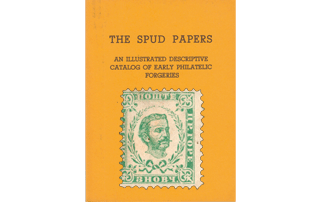Spud Papers – Montenegro




 1874. 2, 3, 5, 7, 10, 15 & 25 Novch.
1874. 2, 3, 5, 7, 10, 15 & 25 Novch.
These “Novch.” are probably the equivalents of the Austrian Kreuzer and Soldi; and, from there being a 7 in the set, it is possible that we may see a 7 Kr. and 7 Soldi for Austria soon. This, of course, is only a conjecture. The letter which is translated v in “Novch,” is the Russ soft B, with which we take most singular liberties. In the Russian locals for instance, it is given as v, B, W,U, and even as FF! but I fancy that v is the best rendering, as that is nearest to the sound of it. I am sorry our publishers have no Russ types, as there is a mistake in the forgeries which could be shown by these types in an instant, but which is rather difficult to explain in words.
Genuine
Lithographed (?) on thick white wove paper, perf. 10 1/2. All values from same stone. Inscription on right hand label reads, TSR. GORE. The letter TS is like two I’s joined at top and bottom, with a little tail to the right hand of the bottom cross-stroke. In these stamps, it looks like a flaw in the label more than anything else. The stops after TSR. and NOVCH. are large and distinct. The ear is large, and very prominent. There is a strongly-marked vertical cleft or dimple in the chin.
Forged
Lithographed, on thin white wove paper; perf. All values from same stone. Inscription on right-hand label reads PR. GORE. The p is like two I’s joined top and bottom, but without the little tail. The stops are very small. The ear is almost hidden by the hair and whisker. The cleft or dimple in the chin is very slight, and oblique. The colours closely resemble those of the originals. I must give the forgers credit for having made some excellent imitations. I pored over these stamps for a long time, before I noticed any variations between the genuine and the false; and even now, I fear that these differences are not very prominent. The perforation is a good test; it is large and very clear in the genuine, but very poor in the forgeries. This, and the prominent ear and the little tail to the T’s, are the only points which show the genuine stamps. The forgeries are printed in sheets of 25, 5 x 5, and postmarked with four concentric circles, like the old Baden postmark. Both these and the Dominica forgeries are destitute of gum.
From “The Spud Papers” by Atless, Pemberton & Earée, 1871-1881.

